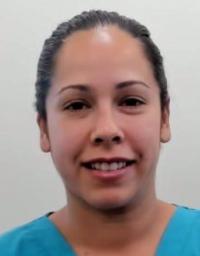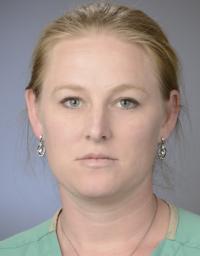Welcome to the Cardiology Service at the UC Davis Veterinary Medical Teaching Hospital.
Our team in Davis consists of three board-certified faculty veterinarians, five resident veterinarians training to be cardiology specialists, and technical staff dedicated to providing compassionate, state-of-the-art diagnostic and treatment services to animals with cardiovascular disease. We also have two cardiologists at our satellite facility in San Diego.
The majority of our patients are dogs and cats, but we regularly examine horses and exotic pets like birds, reptiles, small mammals and zoo animals. Although many pets are referred to us by primary care veterinarians, anyone may request an appointment for their animal to be examined. Common reasons for cardiac examination in animals include heart murmurs, irregular heartbeats, respiratory complaints, and weakness or fainting. Because heart problems are common in older dogs and cats with other medical problems, we also perform many examinations on animals admitted to other services in the hospital (internal medicine, surgery, etc.), many of which are requested as part of a pre-operative evaluation.
The majority of animals can be completely evaluated using only non-invasive examination methods. We also offer minimally invasive (catheter-based) interventions to repair or improve certain congenital heart defects, and we have extensive experience implanting cardiac pacemakers in dogs with abnormally slow heart beats.
Clinical Activities and Procedures
Physical Examination and Consultation
All examinations begin with the owner and animal in an examination room. First, the reason for the animal's visit, the history of the problem, and any previous evaluation or treatment is discussed. This is followed by a cardiac physical examination. The examination may include examination of the animal's mouth or eye membrane color, the large veins in the neck, the palpable heartbeat on the chest, and the arterial pulse, but always includes listening carefully to the heart and lungs. In addition to a resident-in-training and/or faculty doctor, 4th (final) year veterinary students are involved in every examination as part of their two-week clinical training in cardiology. Following the examination, the probable diagnosis or most common possibilities are discussed, as well as the choices of additional recommended diagnostic techniques. Most evaluations can be completed in a few hours, after which a second meeting with the owner is held to discuss the findings and recommendations. Any questions from an owner or agent are discussed, and a written summary of findings and recommendations are provided. If the animal was referred by a primary care veterinarian, they are notified of the visit by telephone as well as a written summary of the examination results and treatment recommendations. One of our goals is to involve the owner in all discussions and decisions and to help educate them and have them understand all available options for treatment.
Blood Pressure Recording
Although arterial hypertension (high blood pressure) is not as common in animals as it is in humans, arterial pressure is measured routinely in many patients, especially those with other medical conditions known to be associated with high blood pressure (kidney disease, thyroid or adrenal gland disease, etc.), and in patients where high blood pressure may be suspected from an echocardiogram. The technique is very similar to that used in humans, involving an inflatable cuff placed around a limb and a monitor to detect flow in the artery within the cuff. Proper technique is critical and the patient must be as relaxed as possible. Dogs and cats with high blood pressure may be prescribed some of the same blood pressure lowering drugs that are used in humans.
Cardiac Catheterization and Intervention
In some patients it may be necessary to perform more invasive procedures for diagnosis and treatment of a heart condition. In the cardiac catheterization & intervention lab, catheters are inserted into blood vessels of anesthetized patients and are guided through the heart using fluoroscopic radiography.
Pressure and other data may be recorded in the various heart chambers and adjacent blood vessels, and contrast dye visible to the fluoroscope can be injected to outline the heart chambers and large blood vessels to identify defects. Most animals come to the cath lab, however, for one of three common interventional procedures performed to correct or improve certain specific heart condition
- Catheter closure of a congenital defect
- Balloon dilation of obstructive defects
- Cardiac pacemaker implantation for slow heartbeats
Electrocardiography (resting)
A resting electrocardiogram (ECG or EKG) is performed on many animals with heart disease. The ECG is a graphic recording of electrical potentials that develop on the external surface of the body as a result of the electrical activity of the heart. Every heart beat begins with an electrical signal that is conducted through the heart and stimulated the heart muscle to contract. Because the normal pattern of initiation and conduction through the heart is consistent from beat to beat, the normal pattern on the body surface is also consistent. The ECG is used primarily to evaluate and identify the electrical heart rhythm and to identify abnormal beats (arrhythmias) or abnormally conducted beats (heart block, bundle branch block). It is the only way to rapidly identify such electrical abnormalities, which may cause an abnormally rapid, slow, or irregular heart beat and pulse.
Electrocardiography (ambulatory)
In some patients, symptoms may be intermittent, or an abnormal heart rhythm (arrhythmia) may occur at irregular intervals. To better correlate an arrhythmia to reported symptoms, a continuous loop-type recorder may be used. The recorder (shown at left) is attached to electrodes on the animal and continuous senses a loop of the ECG. When the suspected symptom is observed, the owner presses the Record button and the device digitally captures several minutes of the ECG for subsequent examination. In other patients, it may be important to assess the frequency and severity of an arrhythmia throughout the day. In these cases, a continuous ambulatory ECG recorder (Holter monitor) is used to digitally capture the ECG for 24 to 48 hours. The system is attached to the animal as shown below, and the pet is sent home. At the completion of the recording, the owner mails the vest and recorder back for analysis. The ECG stored on a small flash memory card in the recorder is transferred to a computer for analysis. Computer software is used to evaluate the recording and provide a summary of heart rate and the type and frequency of any abnormal beats.
Echocardiography (Ultrasound Imaging)
An echocardiogram (cardiac ultrasound or sonogram) is a sonar image of the heart and adjacent large blood vessels (great vessels). It is the principal non-invasive technique that allows a cardiologist to directly examine the anatomy and mechanical function of the heart. In most small animals, the examination is performed with the pet lying on a padded table that allows the imaging transducer to be directed upward from below the table. In large animals (horses, etc.) the examination is performed with the animal standing. Most animals can be examined with no or only very mild sedation, and there is no discomfort associated with the examination. The two-dimensional (2D) image allows a subjective evaluation of the walls, chambers, and valves, as well as the measurement of specific dimensions (chamber size, wall thickness) and indexes of the function of the ventricular chambers. A color Doppler image shows the direction and speed of blood flow throughout the heart and great vessels, and is very sensitive for identifying leaks in the four heart valves, abnormal movement of blood between the left and right sides of the heart, and obstructions to normal blood flow.
Faculty

Marisa K Ames, DVM, DACVIM (Cardiology)
Associate Professor - Chief of Service

Allison Gagnon, DVM, DACVIM (Cardiology)
Assistant Professor

Joanna Kaplan, DVM, DACVIM (Cardiology)
Assistant Professor

Joao Orvalho, DVM, DACVIM (Cardiology)
Clinical Cardiology Specialist based at the UC Veterinary Medical Center - San Diego

Timothy Hodge, DVM, DACVIM (Cardiology)
Clinical Cardiology Specialist based at the UC Veterinary Medical Center - San Diego
House Officers

Geghani Galustanian, DVM
Resident III

Elise Lenske, BVSc
Resident IV

Lauren Nakonechny, DVM
Resident III

Justin Ringhofer, DVM
Resident I

Emma Weitzhandler, DVM
Resident II
Staff

Juan-Luis Alvarez, RVT

Ramon Fuentes, AHT

Melissa Guerra, RVT

Diana Taylor, RVT

James Thompson, AHT

Cristin Dietrich
Cardiology Service Coordinator

Megan Loscar, RVT
Small Animal Specialties Manager

